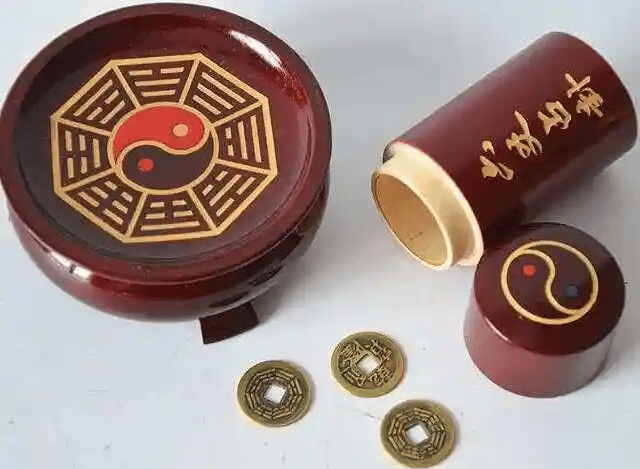Liu Yao | The Ancient Chinese Divination Art
Liu Yao predictions are highly specific and targeted, with a wide range of applications including academics, career, marriage, business transactions, wealth, travel, lost items, separation, illness, lawsuits, as well as weather and natural phenomena, among others.
2/14/2025


I. What is Liu Yao?
Liu Yao, an ancient divination method originating from the Zhou Dynasty, is an important part of the I Ching prediction system. Through the observation and summarization of natural laws, it developed a unique Naja system. Initially, the ancients used yarrow stalks for divination. By the Song Dynasty, people innovatively replaced yarrow stalks with three copper coins, a method known as "using coins instead of yarrow."
During the divination process, the practitioner holds three copper coins in hand, silently contemplates the matter in question, then shakes and drops them into a divination plate. This is repeated six times to form what is called a "hexagram." Each toss result represents one "Yao" (line), and six tosses form a complete hexagram image. Each hexagram corresponds to one of the 64 hexagrams in the I Ching, and each Yao has its specific meaning. By combining factors such as the daily Heavenly Stems and Earthly Branches, the Six Relations, the Six Animals, etc., along with the elemental strength and interactions of the "Yong Shen" (central figure of the query), and referencing the I Ching line texts, the development process and potential outcome of the matter are analyzed and judged.
Liu Yao predictions are highly specific and targeted, with a wide range of applications including academics, career, marriage, business transactions, wealth, travel, lost items, separation, illness, lawsuits, as well as weather and natural phenomena, among others. Its profound subtleties can be grasped intuitively but are difficult to convey in words. Due to its variability and depth, Liu Yao is also regarded as one of the most widely spread prediction methods among the people.
II. Liu Yao is Not Superstition, But the Ancients' "Decision-Making Mindset"
The ancients lacked modern scientific instruments and big data analysis. When facing uncertain matters (such as war, farming, marriage), they sought a "reference." Liu Yao divination, in essence, was a "decision-making model" they developed – using changes in hexagram images to simulate potential developments of a situation, then interpreting them based on life experience.
For example, if planning to plant crops in spring, and the divination shows the Yao "representing rain" is very strong and the Yao "representing land" is auspicious, then one would feel assured. This essentially integrates the observation of nature into hexagram interpretation. Another example: inquiring about a lawsuit, if the Yao representing the "judge" is a Yang Yao (upright and just) and harmonizes with the Yao representing "oneself," one might feel hopeful – this is actually a simple judgment of interpersonal relationships and social rules.
Furthermore, Liu Yao contains much dialectical thinking. For instance, the I Ching often says "things will reverse after reaching an extreme;" the Old Yang Yao (extremely strong Yang) must change into Yin, reminding one not to be too extreme. "Misfortune and blessing are intertwined;" a good hexagram contains unfavorable Yao lines, and a bad hexagram contains favorable ones, meaning nothing is absolute and it depends on how one responds. These principles, even without using them for divination, can inspire us in conducting ourselves and handling affairs.
History enthusiasts can see the lifestyle and thinking patterns of the ancients through Liu Yao; philosophy enthusiasts can ponder methods of dialectical thinking from the changes in hexagram images; even ordinary people, by learning a bit about Liu Yao, can understand many references in traditional culture (for example, when a TV drama says "the hidden dragon does not act," you know it means "the time is not right, don't act rashly").
